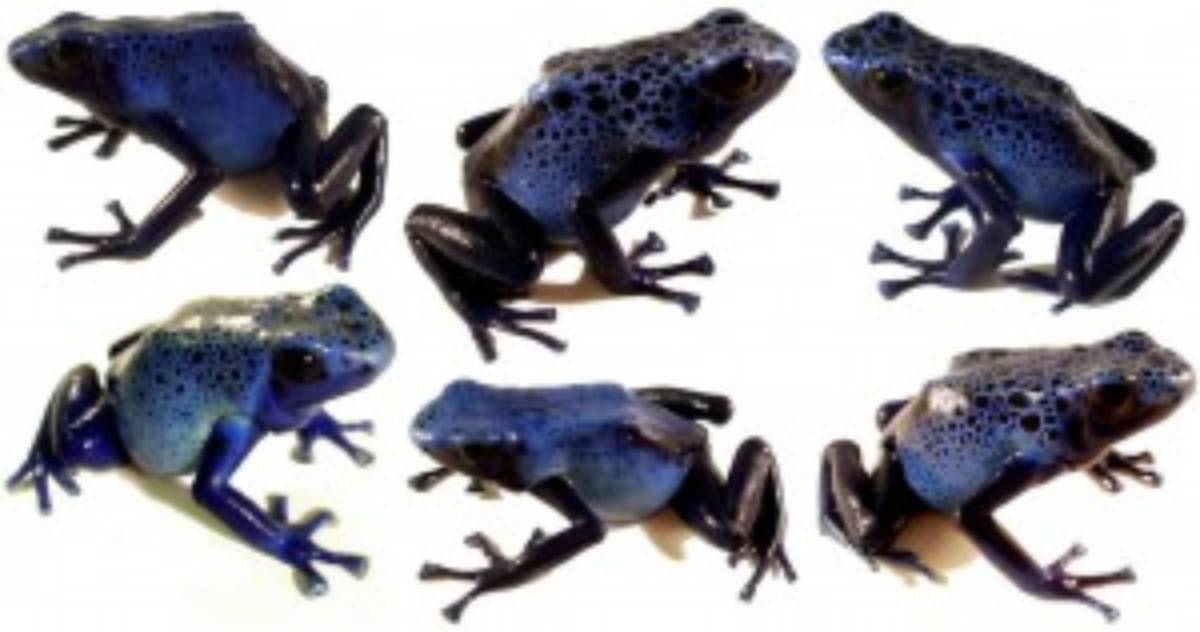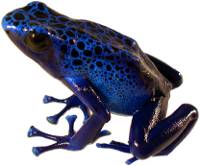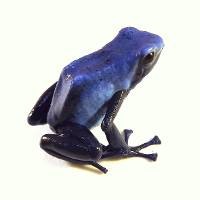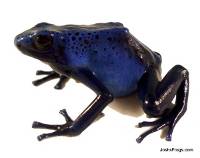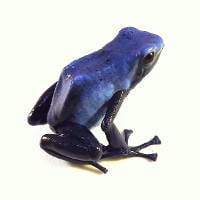Josh's Frogs
Why you should buy from us
Dendrobates tinctorius 'Azureus'
Dendrobates tinctorius 'Azureus'
is a fairly large morph of tinc. Known for their striking blue color, a hue rather rare in the animal world, these poison dart frogs used to be very hard to find and expensive. Successful efforts at captive breeding have brought their price down drastically, making azureus affordable to almost anyone.
Trade Name(s)
Dendrobates tinctorius 'Azureus' is typically just called azureus in the pet trade. They are also known as the sky blue poison dart frog, or simply the blue poison dart frog.
Family & Scientific Name
Dendrobatidae; Dendrobates tinctorius
Range & OriginSuriname, from the south central portion of the country. This region is known as the Siplawini Savannah, and is a large grassland with patches of forests. Azureus are native to one of these patches, and has a very limited distribution in the wild. Many of the animals in captivity were released into the pet trade from zoos or brought in with fish imports.
Adult SizeAdult female
Dendrobates tinctorius 'Azureus' are typically about 2.5” long, with males slightly smaller. Compared to other morphs of tincs, azureus are a medium to large size tinctorius.
Life SpanCaptive life span of
Dendrobates tinctorius is estimated to be 10-20 years, with individual instances of
tincs living over 20 years reported.
EnclosureGenerally,
poison dart frogs are kept in
naturalistic vivaria with
live plants and little to no ventilation.
Dendrobates tinctorius hails from humid tropical rainforests, so replicating that habitat in captivity is ideal.
Live plants should be used, and actually help to keep the environment clean. Provide 10 gallons or more of space per frog when adult.
SubstrateWith
naturalistic vivaria, substrate typically consists of a 2” base layer of
hydroton, followed by
substrate barrier, then a well-draining substrate such as
ABG mix in a 2” layer. On top of this,
long fiber sphagnum is placed in a thin layer, followed by a hearty coating of
leaf litter. The substrate can be seeded with various species of microfauna, including
springtails and
isopods, which are cultured and sold specifically for such applications.
TemperatureFor the most part,
Dendrobates tinctorius needs to be kept above 60F and below 80F, with an ideal temperature in the mid to low70sF. Although they can tolerate brief cold spells,
poison dart frogs are very sensitive to heat.
Social Structure
Dendrobates tinctorius 'Azureus'
does fine in groups, pairs, or singly when young. When the animals reach sexual maturity (10-12 months), females can sometimes fight with each other over access to a male, and may need to be separated. Many keepers prefer to keep tincs in pairs. If a group of
Dendrobates tinctorius is raised up together in a large tank with plenty of cover, they typically coexist fine into adulthood.
DietLike most
Poison Dart Frogs, azureus prefer smaller foods less than 1/8” long.
Flightless Fruit Flies are an ideal staple food, as they are easy and inexpensive to culture, and available from several online stores, including . Other common prey items include
pinhead crickets, bean beetles,
springtails,
isopods, aphids,
rice flour beetles, lesser wax moth larvae, and
phoenix worms. It is important to dust each prey item with a
vitamin/mineral supplement.
CleaningIf housed in a
naturalistic vivarium, cleaning is kept to a minimum. As long as water does not saturate the
ABG substrate (it will smell like rotten eggs if it does), the substrate needs to be replaced only every 3-5 years. New
leaf litter should be added every 6 months or so, as the old
leaf litter breaks down. Plants will need to be trimmed to keep them from outgrowing the vivarium, and the front glass can be wiped down with a paper towel to remove any algae or debris that collects there. All of the inside surfaces of the vivarium (ie plant leaves, wood, glass) should be sprayed down with a hand mister once to twice a month.
Handling
Poison Dart Frogs should not be handled except when they are being moved to or from a vivarium. They are harmless and non toxic in captivity, but household chemicals and oils on your skin can easily harm them.
Conclusion
Dendrobates tinctorius 'Azureus' is a very striking dart frog, and is highly sought after for it's brilliant blue color, bold personality, and ease of keeping. Unlike just a decade ago, azureus are now quite common in the pet trade and widely available. Best kept in pairs in naturalistic vivaria,
Dendrobates tinctorius 'Azureus' is a must have for any dart frog collection.


